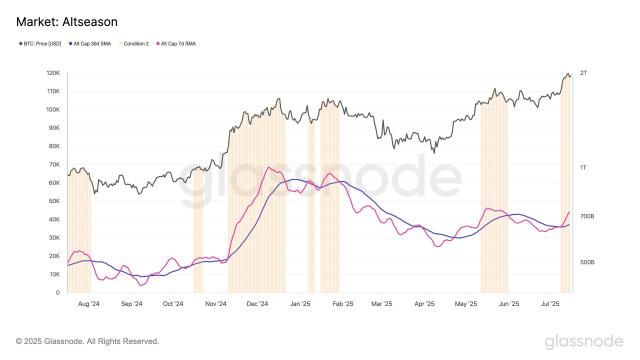Author: Stacy Muur
Translated by: Felix, PANews
Original Title: Will Kaito Leaderboards Become a Project Launch "Artifact", and What Happens After TGE?
The crypto market has always been driven by narratives. But in 2025, a new mechanism for attracting attention took center stage: KaitoAI Earn Leaderboards. These incentive activities reward early researchers, commentators, and meme creators (colloquially known as "yappers"), allowing them to generate hype before project launch in exchange for future token allocation.
Its operational mode is now well-known:
Reward early user awareness
Craft stories
Create demand before TGE
It indeed works effectively. Leaderboards can enhance exposure, trading volume, and social recognition. But the question is:
Can this attention be sustained?
Once token issuance and airdrops are claimed, these "noisy" players will move on to the next token launch. Prices will drop, trading volume will shrink, and engagement will gradually decline.
This article critically analyzes multiple Kaito-related projects, including $SKATE, $HUMA, $QUAI, and $SOON, to explore whether this hype can be sustained after token listing. A trend is emerging: narratives are designed to generate attention, not to maintain momentum.
Let's start with SKATE.
Skate: High Trading Volume, Multiple Listings, and Stagnation After Kaito
$SKATE is a token related to the Solana modular game layer, with strong momentum at launch. With support from well-known exchanges like Binance and Bitget, and extensive Kaito Earn promotional activities, SKATE had sufficient liquidity and high visibility at launch.
[The rest of the translation follows the same professional and accurate approach, maintaining the original structure and technical terminology]From April 29 to May 12, users can claim through the Kipper platform. Weekly snapshots track contributors, with top yappers like @0xalank, @basedPavel, and @Abhijeetcg obtaining up to 5.95% of personal cognitive share, far higher than SKATE or HUMA.
Although the Quai mainnet was launched on January 29, the token could only be freely traded after exchange data was released on February 22.
QUAI's first-day performance (February 22, 2025):
Opening price: $0.09884
Highest price: $0.2263
Closing price: $0.1929
Trading volume: $10.14 million
Subsequent trend: Rotation, reversal, and a long cooling period.
QUAI is one of the most eye-catching new projects under Kaito. Its price surged from $0.09884 to $0.2263 during the day, a 129% increase, ultimately closing at $0.1929, a 95% rise.
But this was already the peak.

In the following weeks:
February 23-26: Price rapidly dropped to around $0.17 to $0.18.
March 1-15: Price continued to decline to the $0.12 to $0.08 range, reflecting the typical fund rotation after hype.
April to May: Despite several small rebound attempts, support gradually weakened.
June to July: The token's price ranged between $0.06 and $0.07, trading at $0.05266 as of July 7, down about 73% from the closing price and about 76.7% from the highest price.
Trading volume also tells the story:
From $10 million on the first day to about $3 million now, indicating a sharp decline in activity.
Even the second phase of Kaito rewards did not significantly boost demand after TGE.
Summary: QUAI had many advantages: extensive Kaito allocation, strong brand influence, a notable TGE, and strong early price momentum. However, attention quickly shifted. Even top yappers could not solidify its secondary market interest.
QUAI's current trading price is below the issue price and has not seen a significant recovery since March, fully demonstrating that early liquidity does not equate to lasting confidence.
Soon: Integration with Kaito, Binance Alpha Platform's Popularity, and Reality Check
Soon, a high-performance Solana Optimistic Network (SVM-based rollup), ran one of the most structured and community-cohesive Kaito Earn activities in early 2025. During the 3-month activity period, it allocated 450,000 SOON tokens (about 0.045% of total supply) to the top 100 yappers.
Activity period: February 19, 2025 - May 19, 2025
Claiming period: May 23, 2025 - June 23, 2025
Eligibility: Kaito ranking contributors, early NFT holders, builder badge owners
This activity was not just a reward airdrop but also integrated into SOON's brand image. Participating users would obtain the "Sooner" role, badges, and social status, reinforcing that Kaito yappers are key early spreaders of SOON.
TGE and Market Launch: From Discussion to Heated Surge
The SOON token was issued on May 23 and listed on Binance Alpha on May 24. The token opened at $0.4527, briefly touched $0.4776, and closed at $0.4007 that day. The first-day trading volume exceeded $103 million, reflecting significant speculative activity and exchange amplification.

Some market indicators (as of July 7, 2025):
TGE date: May 23, 2025
First-day opening price: $0.4527
First-day closing price: $0.4007
First-day trading volume: $103.1 million
Current price: $0.1529
Market cap: About $26.9 million
Opening pullback: About 66.2%
Highest pullback: About 68.0%
Trading volume/market cap ratio (July 7): About 97%
What happened after the first day?
Late May to mid-June: SOON remained in the $0.29 to $0.39 range, with little volatility and slow decline.
Late June: Support level broke below $0.25, with trading volume expanding from June 27-30, showing an accelerating downward trend.
July 5-7: SOON plummeted 40% within 48 hours, from $0.22 to $0.13, then slightly rebounded to $0.15.
This sharp decline coincided with the end of the claiming period (June 23), after which many claimers likely sold, and attention shifted to other Kaito activities.
Summary: The Earlier the Sell-off, the Better?
SOON had all the elements of a successful launch: strong infrastructure promotion, Binance Alpha platform exposure, and community incentive mechanisms. However, the token dropped 66% in six weeks, indicating that hype did not convert to solid support.
The Kaito Earn model has become predictable:
Narrative-driven airdrop → High first-day trading volume → Quick airdrop rotation → Price decline as attention shifts.
Although SOON sincerely tried to integrate into community culture, its market performance became a typical case of attention fragility. It gained a high-profile start with Kaito's background but could not prevent subsequent silence.
Conclusion: Cheap Narrative, Scarce Belief
The Kaito Earn model has proven to be a powerful engine for gaining attention before project launch, but a common pattern is gradually emerging in projects like SKATE, HUMA, QUAI, and SOON: attention surges at TGE but fails to convert into long-term belief.
Despite differences in industry (gaming, infrastructure, PayFi), listing platforms (Binance, Bitget), and reward mechanisms, the results are surprisingly similar:
Tokens surge on the first day
Airdrop receivers rotate
Price trends flatten within weeks
This is not a flaw of Kaito itself; as a content discovery layer, it performs excellently. However, the current model incentivizes narrative creation rather than long-term belief. Due to lack of utility, retention mechanisms, or continuous product demand, most tokens launched through this channel fall into an attention/exit cycle.
Unless this cycle is broken and tokens are designed to reward holding rather than mere hype, the Kaito model may remain: a powerful launch platform that rarely successfully lands.






